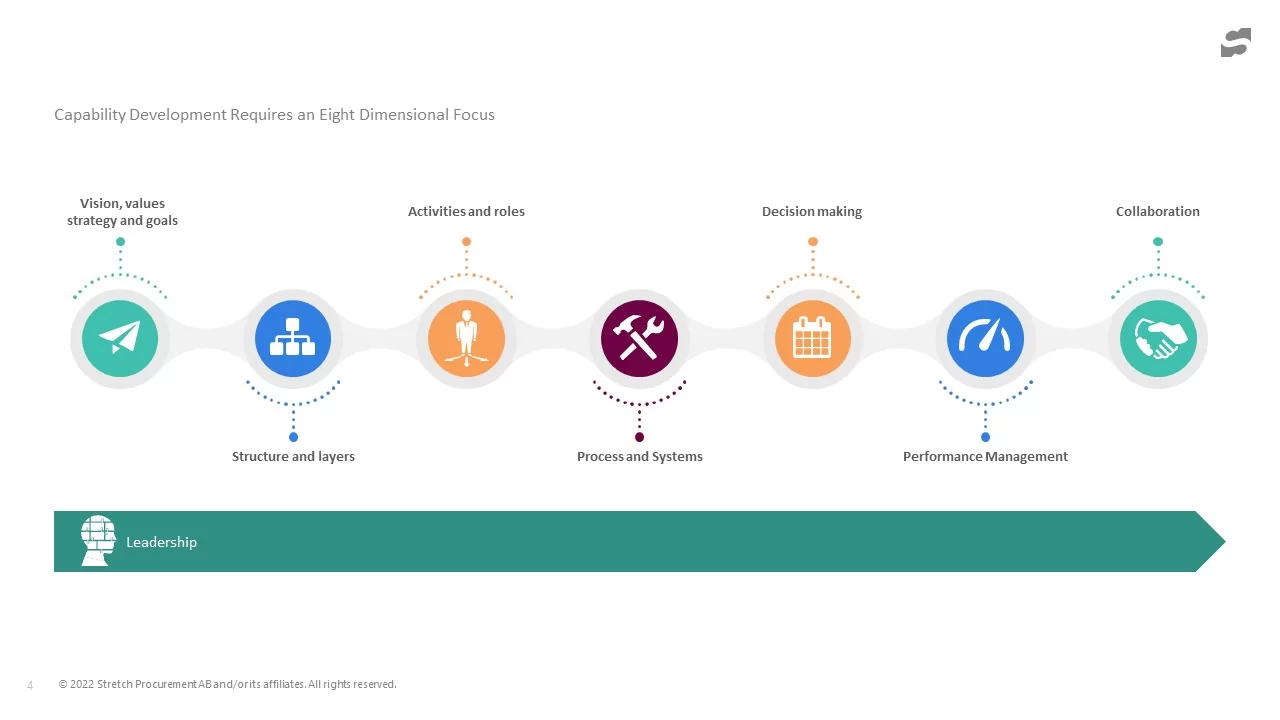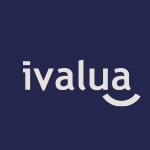Ivalua Named A Leader In The 2025 Gartner Magic Quadrant™ For Source-To-Pay Suites Report
View Report
Ivalua Named A Leader In The 2025 Gartner Magic Quadrant™ For Source-To-Pay Suites Report
View Report
Blog »

Originally published on Inkopers Cafe
Joakim Lundgren is a partner at the Swedish consultancy Stretch and an Advisor and Consultant in the field of Value Chain Management & Development. He is also a Lecturer at the Stockholm School of Economics.
Stretch was founded in 2004, composed of a group of sixteen companies in Scandinavia. “In the beginning, our company focused on management solutions and SAP products,” says Lundgren. “When Stretch expanded the work it called for other competencies than system and application consultancy.
When I joined in 2013 my specializations in purchasing and the supply chain were a good fit for the growth and development of the company. In addition, I am a Lecturer at the Stockholm School of Economics, which is a very rewarding job. The work includes cooperation with other universities, such as Maastricht and Stanford, among others.” He finds the collaboration with the other universities interesting as it requires rethinking and reassessing old standards. “The purchasing models have to be redeveloped. This is also acknowledged by ‘purchasing gurus’ like Arjan van Weele whom is now rewriting his books and updating the models”
A Different Way of Thinking
Lundgren believes that companies need a different way of thinking. “The idea that everything is interchangeable is outdated: from the working method to the supplier and price. In the 1950s, the added value of companies was still 40 to 50 percent. That’s now 20 percent. More and more value comes from third parties. The new regulations in the field of ESG and the new market conditions call for more cooperation between buyers and suppliers. Corporations are still treating suppliers as a “necessary evil” and this has to change.”
Lundgren has identified a strict separation between quantity (‘sourcing’) and quality (‘proposals’). “Contracts should really revolve around the benefits. Companies are too internally focused. Based on that, they ask suppliers for quotes on predefined definitions and solutions. Purchasing should rather look for the best solutions with the suppliers by asking for a solution to a problem statement. You could even ask several suppliers to work together to provide you the best options and solutions. Only very mature organizations work on the basis of trust engagement in extensive value sharing with suppliers. For them, suppliers are interchangeable parts of their organization.”
According to him, working together with suppliers on solutions pays off considerably. “Research shows that collaboration yields 14% quality improvement, 11% cost savings, 20% process savings and 40% more access to new technologies.” Why don’t organizations start right away with it? “It goes against what they have been taught. That is negotiating until the desired result, with a focus on savings.”
Lundgren also experiences limitations with working in a best-practice environment. “Best practices are tied to a time and environment. As a result, they no longer have any value in the present. I prefer to talk about good practices, which moreover keep changing.” Another limitation, he says, is that we use our imagination too little. “An example is that if you had introduced the iPhone in early 2000, nobody would have really understood the possibilities and opportunities about it. A telephone was meant for calling and today there are mainly other things that are done with a smartphone than making calls. It’s about thinking about the potential. Also, today, if companies wait too long to take a look into possibilities and opportunities, they will be out of the game. Let’s look at Blockbuster in the US.–Netflix started the streaming and even as Blockbuster understood that and had the technology to do the same, the company kept holding on to fixed principles and now they are out of business.
Companies need to be flexible to keep up with a rapidly changing world that is becoming more dynamic. They have to be able to see what is needed in the future and be flexible enough to pivot the needed changes.”

Big Challenges for Procurement
Procurement, according to Lundgren, faces big challenges. “The purchasing principles and critical performance indicators (KPIs) of three years ago are no longer usable. If you only look at maximum savings, you will not achieve the sustainability goals. For example, if you give buyers a basic salary with a bonus based on reaching a savings KPI, sustainable purchasing will not be a success.” He also thinks that purchasing should have more understanding about the company’s end customer. “It’s important for procurement to understand end-customer behavior to make adjustments in time. Procurement should incorporate end-customer feedback into the strategy.”
He also states that organizations must understand the importance of procurement for their strategy. “Organizations are more dependent on external parties to deliver their value add and Procurement is the gate to leverage the most out of these partners. But for organizations to recognize procurement as a strategy partner they need to change. Applying the same tender and process year on year is no longer possible in the current dynamics. Procurement must add to the organization’s strategy and input to improve management decisions. In this way, the business risks can be systematically reduced. An example is the disaster at the Fukushima nuclear power plant in Japan. As a result, Japan had a severe production decrease for an extended period of time. However, the American company Cisco was not affected in the same way as many others. The company had made timely adjustments due to their enhanced collaborations and risk systems. But they did more than just deal with the situation. Instead of just choosing other suppliers, they continued to work with the old suppliers and helped them with the transition to the new situation. That resulted in long terms advantages.”
Lundgren believes that we have been too financially focused since the 1980s and that this has an impact on the vision of companies. “In 1990, the time horizon that companies looked at was still five to ten years. Now that same plan is only focusing on the next twelve month period. But a vision of an organization should not be money or time-bound. If you want to be the most sustainable organization, you have to apply that to every decision and every project. For example, Apple has two goals: to help teachers teach and to help children learn. Their products depend on this. They aspire to something greater than themselves. Apple is not based on ‘the return on investment’, but on the benefits that a project yields. Such an approach turns out to be even more beneficial for organizations.”
He gives another example of the importance of taking a broader view. “Think of the problem with the workforce. Employees want to work for employers with environmental and social impact. The Swedish Northvolt produces batteries, but they have also set up a battery recycling plant. As they say “you cannot be serious about the sustainability of what you are doing unless you are also serious about recycling”. That makes them much more attractive to employees than if they just made batteries.”
Importance of Redefinition
The partner at Stretch sees eight elements of capacity development for companies: 1. process and systems, 2. activities and roles, 3. decision making, 4. structure and layers, 5. performance management, 6. vision, value, strategy and goals, 7. collaboration and 8. leadership. “Leadership is the connecting factor. For increased added value, companies would do well to work with these eight elements. In addition, it is also important for that added value that they check every year what they are doing and what needs to change. For example, they can organize a three-day workshop once a year to assess and ensure that they are on the right track towards their vision. In addition, the added value must be a standard part of every decision.”
According to Lundgren, developing a company requires more than expanding existing capacities. “You have to move past just enhancing what you do and dare to adapt to new ways of working and preferably also redefine what you are doing.” As an example, he cites a pizza shop in New York that sold pizza slices before the corona crisis. “Due to the lock downs, they could not continue selling pizza slices and they realized that their pizza ovens were hot enough to mold plastic, so they switched to making plastic visor masks for protection against Corona. Today they are a med tech company. If instead of this redefinition they had started from the existing capacity, making pizza slices, they would not have been there anymore.”
Procurement in Scandinavia and the Netherlands
Purchasing in Sweden always looked up to Dutch purchasing, according to Lundgren. “The Netherlands has a long tradition in this, dating back to the time of the tulip trade. Scandinavia (the ‘Nordics’) always had a bulk tradition with a lot of heavy industry. The Dutch practices were more refined than the standards of Purchasing in the Nordics which were only price-oriented. However, this has changed. Nordics is now in industries more focused on technologies, service and new markets. This has made us one of the more innovative countries. We no longer look to the Netherlands for good practices, because the Netherlands is no longer a frontrunner in purchasing. The fact that their long-successful principles are becoming less relevant hurts Dutch buyers and makes change all the more difficult for them. I have the impression that companies in the Netherlands often wait for developments before taking action. Many Scandinavian companies conclude that changes are necessary and take immediate action.”
According to him, the strength of the Nordics is that they are ‘early adopters’. “Even as Norway is a major oil and gas producer, they were one of the first countries to decide to subsidize electric cars. It’s the country with the most Teslas per capita. Norway has also implemented a Transparency Act. This is the same principle as European Union (EU) directives in the field of development, transparency and information use. Only Norway has already implemented that. The country is not a member of the EU and that makes it more agile. The problem is that it takes a long time before European directives are also applied. More combined effort is also needed in Europe. Europe could then have much more influence.” Lundgren thinks that the Dutch can learn from the Nordics to have an open attitude towards external influences. “The Nordics can learn from the Netherlands to be more proud of what they do and have more self-confidence.”
New Capabilities
Finally, he recommends daring to develop new capabilities. “Let go of the old and try something new. Don’t work with ‘one size fits all’. If you take the first step, the rest will follow.” In addition, he recommends applying management shifts. “You can have employees switch jobs between the management layers in your organization every three years. That way you break through silos and develop new insights and foster collaboration. Buyers in direct purchasing could, for example, also do indirect purchasing or vice versa.”

Contributing writers from inside and outside Ivalua occasionally add items and information to this blog. We are a team who share an interest and curiosity about procurement and spend management.